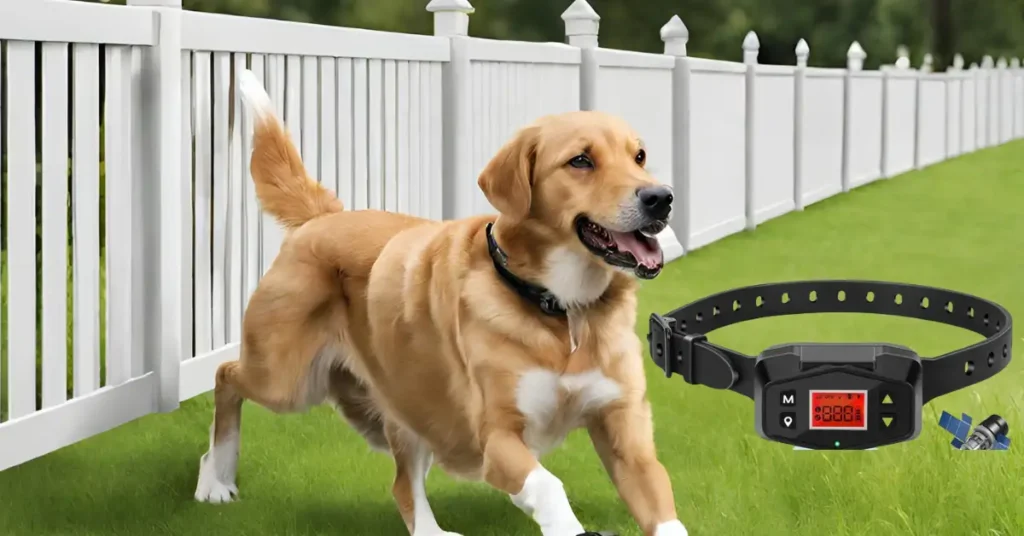Wireless dog fences typically operate on radio frequencies below 9kHz, well within the FCC’s regulations. Since most WiFi signals occur between 2.4 and 5GHz, the chances of interference are minimal. However, the possibility of interference increases if the dog fence boundary covers your entire yard and the WiFi router is on the opposite side.
To ensure optimal performance, some precautions can be taken, such as checking the frequency specifications of the dog fence system, using a dual-band router, or temporarily turning off the dog fence during heavy WiFi use. Overall, with proper planning, interference is unlikely for most users.
Low-Frequency Operation of Dog Fences
In my experience, the distinct frequencies have allowed for smooth operation without any noticeable disruptions to my WiFi signals.
The wireless dog fence emits signals at a range that falls well below the commonly used WiFi frequencies, creating a harmonious balance between keeping my dog safe within the designated boundaries and ensuring my WiFi network functions at its best.
The low-frequency operation, combined with the strategic placement of the dog fence components, has made it possible for me to enjoy the benefits of both technologies without compromise, fostering a sense of security for my pet and uninterrupted connectivity for my digital needs.
This low-frequency characteristic has been instrumental in maintaining a reliable and interference-free environment for both my pet containment system and WiFi connectivity.
Maintaining Harmony Between Dog Fence and WiFi

Finding the right balance between my wireless dog fence and WiFi has been surprisingly easy, creating a friendly coexistence. It all comes down to where I put the parts of the dog fence. By carefully placing the transmitter and receiver, I’ve set up a situation where my pet stays safe, and my WiFi works well without any problems.
Putting the transmitter in the middle of my yard makes sure the signal covers the whole area, giving my dog plenty of space to move around without causing issues with my WiFi.
Also, putting the receiver on my pet’s collar helps the system work smoothly without getting in the way of how it talks to the wireless fence. This careful setup allows my pet to enjoy freedom within the set boundaries while keeping my WiFi working perfectly.
Understanding how my house is laid out and how far both the dog fence and WiFi signals can reach has helped me make smart choices about where to put everything.
Being an owner of a wireless fence has become something I’m used to, and I can confidently say that placing things in the right way makes a big difference in making sure my pet stays safe and my WiFi stays connected.
Following Recommendations for Optimal Performance
The manufacturer’s instructions provided valuable insights into the setup process, making it user-friendly even for someone like me, not particularly tech-savvy.

From the correct placement of the transmitter to the suitable adjustment of the collar on my pet, every step outlined in the recommendations contributed to the smooth functioning of the wireless fence.
The guidance on periodic checks and maintenance has been especially helpful, ensuring that the system remains in top-notch condition. It’s like having a user-friendly roadmap that guarantees my pet’s safety within the set boundaries.
Additionally, the manufacturer’s tips on troubleshooting potential issues have been a lifesaver. Being able to address any concerns promptly, whether it’s related to signal strength or collar adjustments, has made me feel more in control of the system.
As a wireless fence owner, sticking to these recommendations has not only provided peace of mind but has also elevated my overall experience, assuring that my furry friend stays secure while enjoying the freedom the wireless fence offers.
At FenceAdvise, we pride ourselves on being the most reliable and trustworthy source of fencing information. Our articles are based on only the highest quality sources, including peer-reviewed studies, to ensure that our readers always have access to accurate information. Read more about our Editorial Guidelines, About Us.


